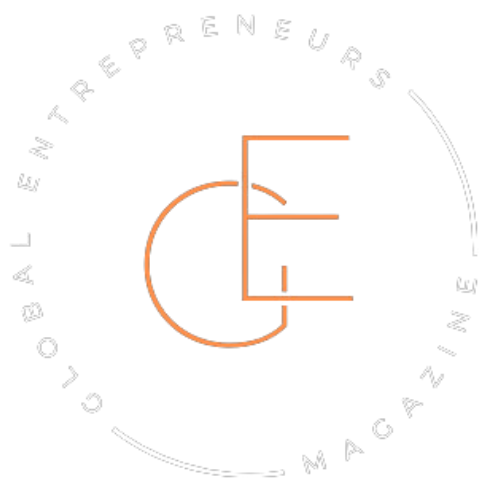You’re tired—but you keep telling yourself this is what it takes. One more reel, one more email blast, one more weekend sacrificed to marketing that still feels like a guessing game.
You’ve probably had those late nights where you’re juggling five tabs, trying to figure out why your audience isn’t responding, even though you’re doing everything. Posting, pitching, promoting. It all looks productive. But deep down, it’s chaos disguised as commitment.
And here’s the truth most people don’t say out loud: hustle can get you off the ground, but it won’t carry you all the way.
Eventually, the wheels start spinning in place. Growth plateaus. Fatigue sets in. And suddenly, it’s not about how hard you work—it’s about whether you’re working on the right things at all.
Hustle culture gave you the start—but it can’t take you further
At the beginning, the hustle made sense. You didn’t have a team, a roadmap, or a budget. So you did what most scrappy founders do—you showed up everywhere. You said yes to every opportunity. You figured things out on the fly.
And honestly? That phase built muscle. It taught you how to be resourceful. How to make something from nothing. How to survive.
But now you’re not just trying to survive—you’re trying to scale. And scaling requires more than speed. It requires direction.
The hard part is letting go of what used to work. We get attached to the scramble. It feels like action. It feels like we’re doing something meaningful. But busy doesn’t always mean effective. You can only run in circles for so long before you realize you’re still in the same spot.
Real growth starts when you stop chasing every tactic and start asking: What’s the bigger picture here?
The strategy mindset: slowing down to speed up
Most business owners don’t lack effort. They lack clarity.
It’s not that you’re not doing enough. You’re doing too much without a clear filter. One week it’s webinars. The next, it’s TikTok. Then it’s email marketing—but only because someone said it still works. It’s exhausting trying to keep up with a dozen directions at once.
Strategy isn’t a step back. It’s a shift in how you think.
It’s the moment you stop reacting and start choosing. You stop asking, What else should I do? and start asking, What actually matters here?
When you’re clear on your message, your market, and your method, the noise fades. You stop second-guessing. You stop chasing. And instead of scrambling to get attention, you start creating it.
What strategy actually looks like (it’s not a 90-page deck)
Forget the buzzwords. Strategy isn’t a fancy PDF with pie charts and mission statements no one reads. It’s direction. That’s it.
It’s knowing what you stand for, who you’re speaking to, and how you plan to grow—without trying every trend just to stay visible.
Strategy looks like this:
- Saying no to platforms that don’t serve your audience.
- Showing up with a clear message instead of changing your voice every week.
- Choosing consistency over random bursts of content you can’t keep up with.
It’s not about doing less. It’s about doing what matters on repeat. And when your message, your channels, and your actions line up, things start to click.
You don’t need a full-time marketing department to act with intention. You just need to stop guessing.
Small shifts that change everything
Sometimes it’s not about a complete overhaul. It’s about making smarter moves with the same energy you’ve always had.
Like moving from “I have to post every day” to “I’ll post when I have something worth saying—and say it well.”
Or switching from pumping out ads to telling stories your audience actually cares about.
Or deciding it’s better to have five real conversations than 500 cold impressions.
These shifts don’t always look dramatic on the surface. But they’re the kind that create traction—the kind that stick.
The goal isn’t to do more. It’s to make sure what you’re doing actually builds momentum. And the more you focus on clarity over chaos, the less you’ll feel like you’re chasing your tail.
Building a brand, not just a buzz
Buzz fades. Brands stick.
It’s easy to get caught up in metrics that feel good—likes, clicks, spikes in traffic. But attention without trust doesn’t go far. The businesses that last aren’t the loudest. They’re the ones that show up with substance, again and again.
A brand gives people something to believe in. It tells them what you stand for, how you think, and why they should care. And the clearer that identity becomes, the less you need to shout.
You stop chasing virality and start building credibility. You stop selling every day and start leading with value.
When people know what you’re about, they don’t need convincing. They remember you.
Building a brand, not just a buzz

Buzz fades. Brands stick.
It’s easy to get caught up in metrics that feel good—likes, clicks, spikes in traffic. But attention without trust doesn’t go far. The businesses that last aren’t the loudest. They’re the ones that show up with substance, again and again.
A brand gives people something to believe in. It tells them what you stand for, how you think, and why they should care. And the clearer that identity becomes, the less you need to shout.
You stop chasing virality and start building credibility. You stop selling every day and start leading with value.
When people know what you’re about, they don’t need convincing. They remember you.
You’re still working hard—you’re just working smarter
Let’s be real—strategy doesn’t mean coasting. It means choosing your battles and knowing why they’re worth it.
You’re still putting in the hours. Still showing up. Still building. But now, every move has a purpose. You’re not grinding just to keep up—you’re creating space to grow.
There’s courage in slowing down long enough to ask, Is this actually working? There’s power in saying no to noise and yes to direction.
And when you do, your work starts compounding. Not because you’re doing more—but because you’re finally doing what counts.
What would marketing look like if you were calm, clear, and consistent?
Picture this—you open your laptop and know exactly what to focus on. No more scrambling. No more second-guessing. Just a steady rhythm built on purpose, not panic.
Your message feels right. Your audience actually engages. And your marketing? It starts to feel less like survival and more like leadership.
You didn’t quit the hustle because you got lazy. You outgrew it.
Now you’re building something with roots—something that lasts.
So ask yourself: what changes when you stop chasing and start choosing?




